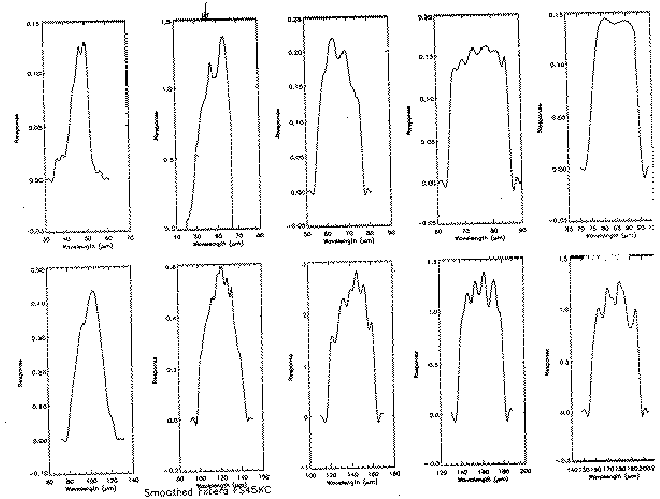
In a Fourier Transform of f(sigma), the fringe component is very narrow, traced by only two FFT components. When the presence of the fringe is noticed on one detector it may be removed in all detectors by zeroing the corresponding Fourier components for all detectors. The components my be reestablished at these frequencies by maximum entropy considerations or by other methods.
This form of glitch removal has proven quite successful in tests, and is likely to become part of ISAP the post-pipeline science analysis package written in IDL (ISO Spectroscopic Analysis Package).
A second possible way to eliminate the problem is through calibration using a spectral response function that has the appropriate fringes "built-in." The following spectral response functions have fringes caused by virtue of the fact that they were prepared while observing an extended source. Different sets of such functions could be provided to users. This idea is under consideration.
